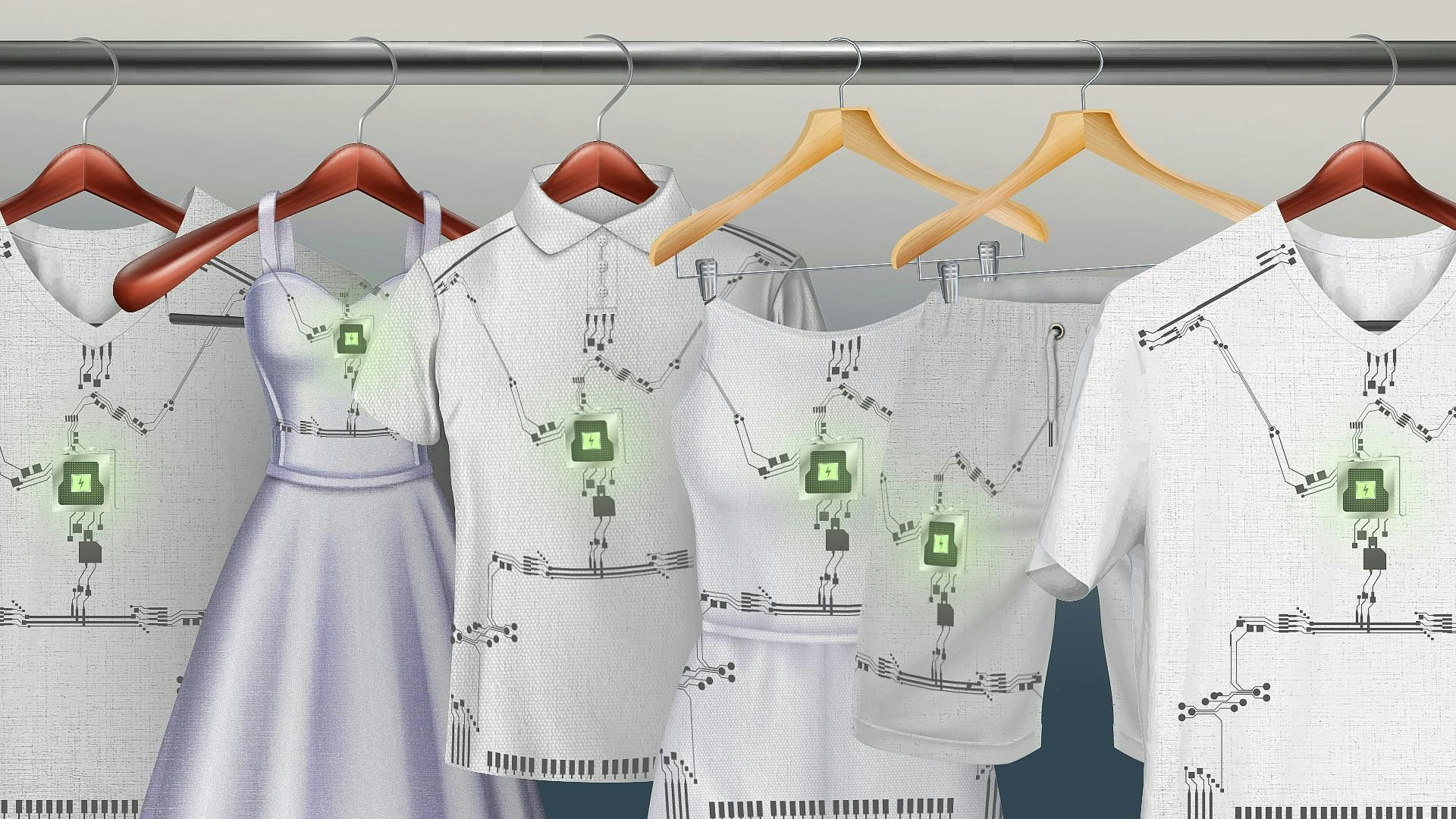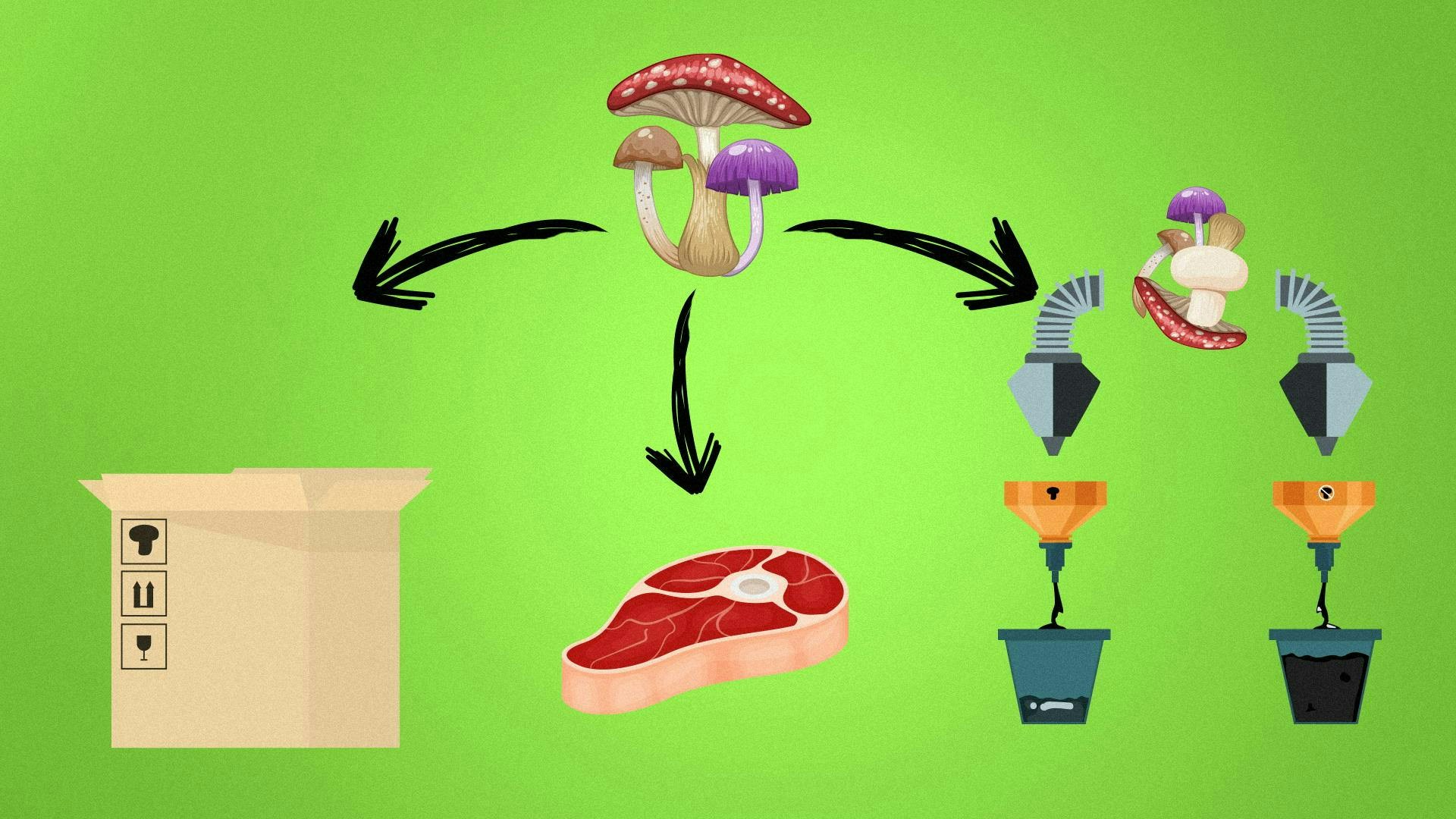Not just sci-fi: Energy-harvesting clothes

TOPICS
ForesightWhat in the name of tech are energy-harvesting clothes?
Exactly what they sound like: Energy-harvesting clothes are textiles with mounted energy-harvesting features. Imagine the sartorial possibilities: Your jeans could charge your phone while you walk.
Let’s take a closer look, shall we?
According to L’Atelier’s technology intelligence engine, the earliest mentions of energy-harvesting clothing date back to the 2000s. Research took off around 2016, as more grants were allocated to universities.
That year, scientists from the Georgia Institute of Technology in Atlanta created a fabric that could harvest energy from motion and sunlight. The process consisted of weaving thread with thin, fibre-based solar cells and triboelectric nanogenerators—energy-harvesting devices that convert mechanical energy into electricity using the triboelectric effect, which we often recognise as static electricity. The result was a 320-micrometre-thick piece of smart fabric that could be integrated anywhere: In curtains, on tents, in shirts or bags, you name it.
Smart textiles can harvest energy from different sources and through various techniques. If a piece of clothing is designed for frequent exposure to sunlight, it can conceivably leverage solar power. If sunlight is scarce in a certain region, fabric there can account for the difference between a wearer’s body temperature and the outside temperature: That’s an opportunity to harvest thermoelectric energy. Body motion, like walking, can be used to generate triboelectricity, piezoelectricity, or electromagnetic induction, making shoes especially ripe vehicles for energy harvesting textiles (1,2,3).
Make energy while you walk or sweat!
Merely walking, or having a warm body temperature during chill days, can generate sufficient energy to charge small devices. Being too hot can generate energy, too, as demonstrated by researchers from the University of California San Diego. The latter found a way to benefit from wearers’ sweat, using biofuel cells.
The technology, dubbed “a wearable micro-grid,” contains enzymes that interact with human sweat. This creates a steady, small electric current. The scientists experimented with biofuel cells placed in a t-shirt, worn by individuals running or biking for 10 minutes before resting for 20 minutes. Initial results showed scalable promise: For the entirety of each 30-minute session, the wearable microgrid could power an LCD wristwatch.
...So when will I get to charge my phone with my jeans?
Surprisingly, despite compelling research and experiments like this one, no commercial prototypes exist yet. Our tech engine signals less than 10 submitted patents over a handful of years. Investments are lacking while research blooms, suggesting a disconnect between scientific interest, and corporate awareness of this technology’s attractive commercial applications.
Opportunity awaits the intrepid, not only because energy-harvesting textiles would be more convenient for us all. Governments and corporations alike are under immense pressure to reduce energy consumption, carbon footprints and e-waste; it won’t be long before someone in the public-facing sphere picks up on this technology’s potential.
One thing’s for sure: Energy harvesting clothing is not just sci-fi, and the ongoing climate crisis will bring their value to the forefront. Tomorrow’s Instagram ads might be for triboelectric running shoes and biofuel cell t-shirts!
In "Not just sci-fi," Nathalie Béchet breaks down the research reality and market potential of technologies that capture our imagination. Check out previous pieces on tractor beams, claytronics and aerographene.
Data on publications and patents courtesy of The Lens. Investment data: Pitchbook. Grants funding: Elsevier.
22 Feb 2024
-
Nathalie Béchet
Illustration by Thomas Travert.
Get a glimpse of the future in your inbox each week.
02/03
Related Insights
03/03
L’Atelier is a data intelligence company based in Paris.
We use advanced machine learning and generative AI to identify emerging technologies and analyse their impact on countries, companies, and capital.


